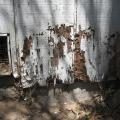What You Need to Know When Things Go Wrong With Your Mover
Things can go wrong when moving, but you need to be prepared for any eventuality. Being prepared means having a plan B ready and reacting quickly if problems do occur. Here are some things to consider when things go wrong. Contact your insurance company, take photos for evidence to prove what happen and know who to contact if you don’t find a resolution.
Call your insurance company
If you hire a mover, make sure you know what your insurance covers. Many homeowners and auto insurance policies provide only minimal coverage for moving your possessions. If you're moving on your own, you may have to assume the risk. However, truck rental companies may offer insurance for the driver, passengers, and cargo.
Your mover should be insured, but make sure you get a copy of their policy to understand the coverage. This insurance policy should clearly outline your responsibilities in the event something goes wrong. For instance, if your mover causes damage to your belongings, you can call your insurance company to file a claim.
It's essential to check the insurance coverage of your mover. Many moving companies charge extra for certain services, including long hallways, long driveways, or extra packing and cartons. In addition, you should ask about their procedure for filing a damage claim.
Obtain a copy the public liability
Public liability insurance is an important part of running a business, whether you work from home or out. Movers should have insurance to protect their assets and protect their clients' property. A furniture removalist who works at a client’s property and while conducting their work, damages a client’s building or if a client gets injured, they will have the insurance to pay for medical bills and compensation.
Take photos or videos for evidence
Make sure that you'll have evidence when things go wrong. Brisbane removalists recommends “to take photos or videos of your valuables before and after the move. This can include furniture, appliances, electronics, and any household items that would be expensive to replace. This way, you can demonstrate that damage was caused during the move or while in the possession of the mover.”
Before the move, take photos or videos of your new house. Take pictures of all of the areas inside and outside of your new home. You never know when your mover might accidentally scratch or damage floors and walls. Also, if your mover rents a moving truck, take pictures of the inside of the cab and back of the truck.
Ask for a resolution
The first thing you should do if things go wrong with your house mover is ask for a resolution. If you are not satisfied with the services that you received, you can file a complaint with the local government body or consumer agency office.
Know which government bodies to contact
If you are finding it difficult to find a resolution with your moving company. Reach out to your local government body in your state, this can be consumer affairs or fair trades. Each state is different however they are there to help with mediation between 2 parties.
Hiring a professional
While knowing what to do in the event that something goes wrong when is important. Auckland movers says “It’s about hiring the right professionals in the first instance even if it costs and extra $50 an hour for an extra man, it is this scenario that would make the difference between not having to deal with the stress when something goes wrong than hiring inadequate help.”
More to Read:
Previous Posts:








